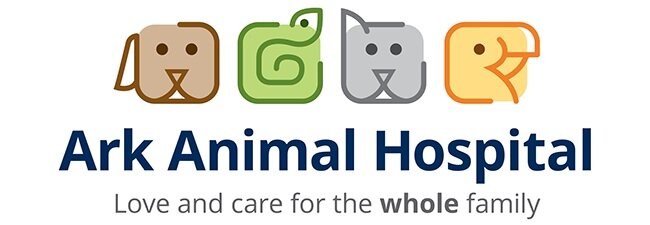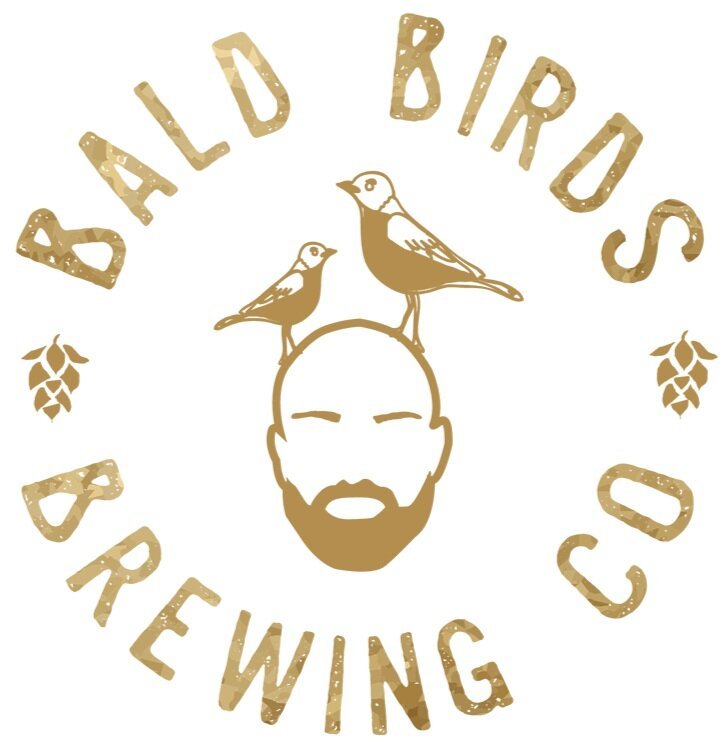Lots of interesting patients here ..for wildlife, it’s a normal busy spring. That means they get into scrapes with our human activities and structures. That’s our goal - to help them when they are impacted by human activity. This baby chipmunk is a recent admission. He’s doing well - almost weaned and enjoying a wide variety of solid foods.
Bird is the word
And it begins…baby bird season. Today we received the first baby birds of the year. This perfect little nest of House Finch nestlings was found on the ground. Although a kind human put it back where it was, unfortunately, for some reason, perhaps predation, the parents did not return. More often than not, when a fallen nest is returned to its original spot, the parents will return to care for their young. Even if the nest is broken or destroyed, you can put it in a small wicker basket and hang it back up. We are always happy to advise on specific situations, so if something like this happens, give us a call. As for these little finches, they are cold and lethargic so will need special care.
It's always bunny in Philadelphia (Metro Wildlife Center...)
The large number of e-cotts we have received are all doing well. We call them e-cotts, short for Eastern Cottontail, the species of rabbit that is common in our area.
For every genuine orphaned baby bunny we receive, we get four or five re-nested over the phone. We know we sound like a broken record here, but if you find a nest of baby bunnies, leave them alone! You will almost never see the mother. They are not orphaned, and she will not abandoned them if they have been touched. If you have ANY questions about baby bunnies, you are welcome to get in touch!
A finch in time saves nine
This gorgeous male goldfinch, resplendent in his breeding plumage, was unfortunately struck down by a bacterial eye disease, conjunctivitis , which disproportionately affects finches. Although he’s out of action for now, the good news is that someone found him and brought him to Philadelphia Metro Wildlife Center in time, and, after a course of oral and ophthalmic antibiotics, he should make a full recovery and be released! He should be released in time for his breeding season, which is much later than for most songbirds (who breed in the spring). Hopefully he’ll still be able to find a mate and raise young this year (although probably not nine of them! )He’ll just have to wait around in quarantine for a while, like most of us. We have plenty of thistle seed though,his favorite food.
Easter Owl
This regal great horned owl was brought to Philadelphia Metro Wildlife Center the night of Easter Sunday, in shock and in what we call level 5 emaciation (the last stage before organ shut-down). We were not able to determine what caused its condition, but after a detailed physical exam, fluid therapy and some easily digestible calories to get the gut working again it has perked up. We are letting it rest for now in dark & quiet.
Birds of a feather?
This is one of several hurt turkey vultures we have recuperating in our outdoor cages, with a view of our fields and woods behind. Meanwhile, several wild loose BLACK vultures (different species) have come down to check out our patient. They are hanging out nearby…maybe keeping him company. Who knows what they are thinking? But they are not agitating each other. A good day for peace on earth.
10 months in the making - good luck snapper!
This snapping turtle was hit by a car last year and took us 10 months to rehab. Awesome volunteer Michael Eibel took him to released. We are very happy for this guy, who can continue his very long and wild life
It snakes my day
We never stop encountering cool animals living wild on our property! It's inspiring to us, because that's our goal - - to get our patients back to the wild lives they were meant to live. The latest encounter was with this Northern water snake who we saw swimming in our creek, poking his head under rocks. We have so many interesting mammals, birds, reptiles and amphibians.. Not to mention a huge variety of plants. We are grateful for such a lovely environment in which to do our work…and for the supporters who help us make it happen
Here come the geese
At Philadelphia Metro Wildlife Center, we don’t really have ‘favorite” animals, but we do have a soft spot for Canada Geese. Right now, if you see any geese on your short trips outside, you might see some interesting behavior. A few months ago, the Canada Geese were in flocks, flying overhead in their famous V formations. But at this time of year, Canada Geese are pulling away from the flocks and pairing up in preparation for mating and raising young. Once old couples reunite (yes, they mate for life) and young geese,newly mature, find partners for the first time (they breed for the first time when they are about 3-4 years old), they will start the process of finding and then defending their territories. Established couples will return to the same nest site year after year; new couples will have to find a spot and defend it. Keep your eyes out for geese. Are you seeing couples, or flocks? If you see a flock, it could be a group of “teenagers”, too young to breed this year. If you see a couple, they might be old hands at this, or it might be their first time.
As most people know, Canada geese are GREAT parents. Unlike with Mallard ducks, both Canada goose parents take an active role in rearing the young. When you hear reports of an “aggressive” goose, that’s usually dad, hissing and trying to act threatening to protect his family - either his partner on the nest, or his group of goslings. You’d do the same if you perceived a threat against your children! Geese also do another interesting behavior - once the goslings hatch, parents lead them to water. Often that’s at a spot with many other goose families with kids..in some ways, it’s a communal child-rearing strategy, called a creche. There is strength in numbers! Sometimes a gosling will swim away and accidentally end up with the wrong family, but the parents will usually accept the their non-related gosling and protect him too.
Here’s a cool photo of some young geese we raised in a past year, at the end of the summer when they were grown up and ready for release
Feeling a little caged in?
Spare a though for this red tailed hawk, one of four hawks we are currently treating. At Philadelphia Metro Wildlife Center, our goal is to get animals OUT of cages as soon as possible - as soon as they have healed from whatever has hurt or sickened them. We can’t wait to let this and the other hawks taste sweet freedom again…just like all of us nowadays. We hope that will be soon!
PMWC is open during this pandemic with modified admissions procedures. If you find an injured animal or one that you think is orphaned, the first step is to give us a call for instructions. Stay safe out there, everyone.
Hunkering down
This is Gemma, our non releasable education opossum and, like many of us, she's hunkering down. But unlike Gemma, our wild opossum neighbors are out and about during the springtime. In Pennsylvania, their peak mating season is February and March, so you may have been seeing extra Possum activity lately. At Philadelphia Metro Wildlife Center, we love possums. Possums are very useful neighbors who eat tons of ticks, potentially helping spare us humans from danger. But we don't just judge wildlife for what they can do for us - they have their own lives... As one of earth's oldest mammals, they've been around since dinosaurs roamed the earth. They are peaceful creatures who generally keep to themselves, although they may look intimidating with their 50 teeth! If you encounter an injured or possibly orphaned opossum, please give us a call.
Buns upon a time...
It's bunny season at PMWC! Did you know that momma Eastern Cottontail rabbits leave their babies alone almost the entire day? Yep. They are actually safer without her, because her body odor and size would attract predators to the nest (which isn't much of a nest.. Just a shallow depression covered with grass and lots of mom's grey brown fur.) We get dozens and dozens of calls when people find these nests of tiny bunnies. Many people assume they are orphaned. But mom will sneakily return at dawn and dusk, to feed and care for them. You may never see her. You probably won't.
So, if you find a nest of bunnies (sometimes under a bush but sometimes in the middle of a busy yard) the best thing to do is ignore them. Some less knowledgeable places advise doing some kind of "test" to see if mom is returning, using string or flour to see if it is disturbed. We advise against this! First, they are supposed to be alone! Why assume something is wrong? Second, disturbing the nest unecessarily is just not a good idea. Rabbits have been doing this forever.. We don't need to interfere. The only time such a test is advised if you see a dead adult rabbit nearby. In that case, call us! We can advise you ( there's a chance that's not the mother, too).
What about 'inconveniently placed " nests? For example, what if the nest is in the yard where you let your dog out? There are several things you can do. First, if you are lucky enough to have two yards, just use the other. But If that is the ONLY place your dog can go, you can place something heavy over the nest (like a wooden pallet, child's sliding board, or an overturned wheelbarrow) while your dog is out.
Remove when he goes in. If your are willing, you can walk your dog for the duration.. It's only 3-5 weeks at most, depending when you find the nest. You can always call us if you are unsure and we are happy to advise!
Quail mail
As wildlife rehabilitators, 99 percent of our business is Pennsylvania wildlife. Occasionally, though, PMWC will step in to help animals that fall through the cracks, and have no where else to receive care. Such is the case with the Cotournix quali, a little chicken like species that we see a few times every year. Although we will never know what happened with this guy, he must have escaped from some captive situation -people use them for food, eggs, and release them for hunting. They easily fall through the cracks - they aren’t pets, per se, and they are not native wildlife,which means many wildlife rehabilitators will refuse to care for them. As for this little guy, we will make sure he’s healthy, give him some free meals, then find him a nice home where he can live with others of his own kind
Wildlife all around us!
Philadelphia Metro Wildlife Center moved into our new home about 8 months ago, and we are so grateful for such a beautiful, healing, natural setting. Our staff and volunteers have been enjoying watching all the wildlife who flock to our property and to the local area. For example have every species of Pennsylvania woodpecker hanging around, a meadow vole who made his home under a piece of board in our back field, a blonde groundhog, and the latest visitor was a small garter snake who came out of his hibernation on a warm sunny day. The other day, though, we were excited to see a Kildeer on Township Line Road…maybe checking out a potential nest spot? Excuse the terrible picture, but due to total lack of traffic these days, one of our staff was able to stop and snap the photo. Kildeer are a new species for us to see! They are very interesting birds who are known for a a unique predator distraction technique - the broken wing display. They act like they are injured (and therefore easier prey) to lead a potential predator away from their nest (which is on the ground). How amazing is that?
What's on TV?
Not television, Turkey Vultures! Right now we have two of these amazing vultures in our hospital,who have been hurt. This one has a fractured ulna (a bone in his wing) that has been set. In addition to “TVs”, we call them buzzards (we are reclaiming that old school word!). We’re here putting in many hours to care for sick and injured wildlife of the area. Remember, if you call us and need to bring an animal, we have a system in place where, for everyone’s safety, you will not interact with anyone in person. Clear instructions are posted. Thanks for helping animals, even in these difficult times!
We are able to accept animals during this crisis
Philadelphia Metro Wildlife Center is OPEN with contactless dropoff to accept animals. We are still caring for animals including 3 hurt hawks, 2 owls, 2 vultures, 2 raccoons, and many baby squirrels and bunnies.
If you find an animal that you think needs help, please CALL US FIRST. When you get here, you will not interact in person with anyone. There are clear instructions to come into the lobby in the garage, and how to leave the animal and the information. After you have left, we retrieve the animal and re-sanitize the room.
Stay safe and calm out there. PMWC is weathering the storm and will be here when it passes and for the decades to come.
It's that time again...baby squirrel season
Here at Philadelphia Metro Wildlife Center, the baby squirrel calls have really started this year. If you find an uninjured baby squirrels, our first goal is reuniting them with their mother. This is particularly true if the whole nest fell down, their tree was cut down, or they were nesting somewhere they absolutely cannot - such as the engine of car (a real call we got this week!) . In these cases, it’s very likely that the mother squirrel is not only around, but very interested in having her babies back. She has more than one nest, just for this purpose! She will not come and retreive her babies if humans are around, so you must leave the area and give her a chance to carry them away to another location, like a mother cat carries kittens. We are ALWAYS happy to advise you in more detail by phone, so please call us with any questions.
Raptor Monday
Lots of raptor patients here at Philadelphia Metro Wildlife Center. In addition to the Red Shouldered hawk mentioned in the last update, we have a juvenile Red Tailed Hawk with an infected foot, a Screech owl who flew into the side of a truck, a Cooper’s hawk and another Red Shouldered. The Red Shouldered mentioned below was xrayed by one of our vets and found to have been shot with a bb gun several times. Luckily his injuries are not too bad and he is eating ravenously. The other raptors have also been making good, steady slow progress.
Patient profile - Red Shouldered Hawk
Although we see a lot of hawks in the Buteo family, usually they are Red Tailed hawks, ubiquitous in this area. This weekend, though, brought us the more unusual Red Shouldered Hawk . Red Shouldered hawks are a little smaller than Red Tails, but have a similar lifestyle - they are ambush hunters who wait in the trees and then attack when they spot their prey, often a small mammal. This particular bird has a problem with his leg and wing, and will go for xrays tomorrow.
Update: Feb. 28
We just received a hybrid domestic duck that was hit by a car near Wissahickon Charter School. Happy to help this duck, hope she recovers.


























